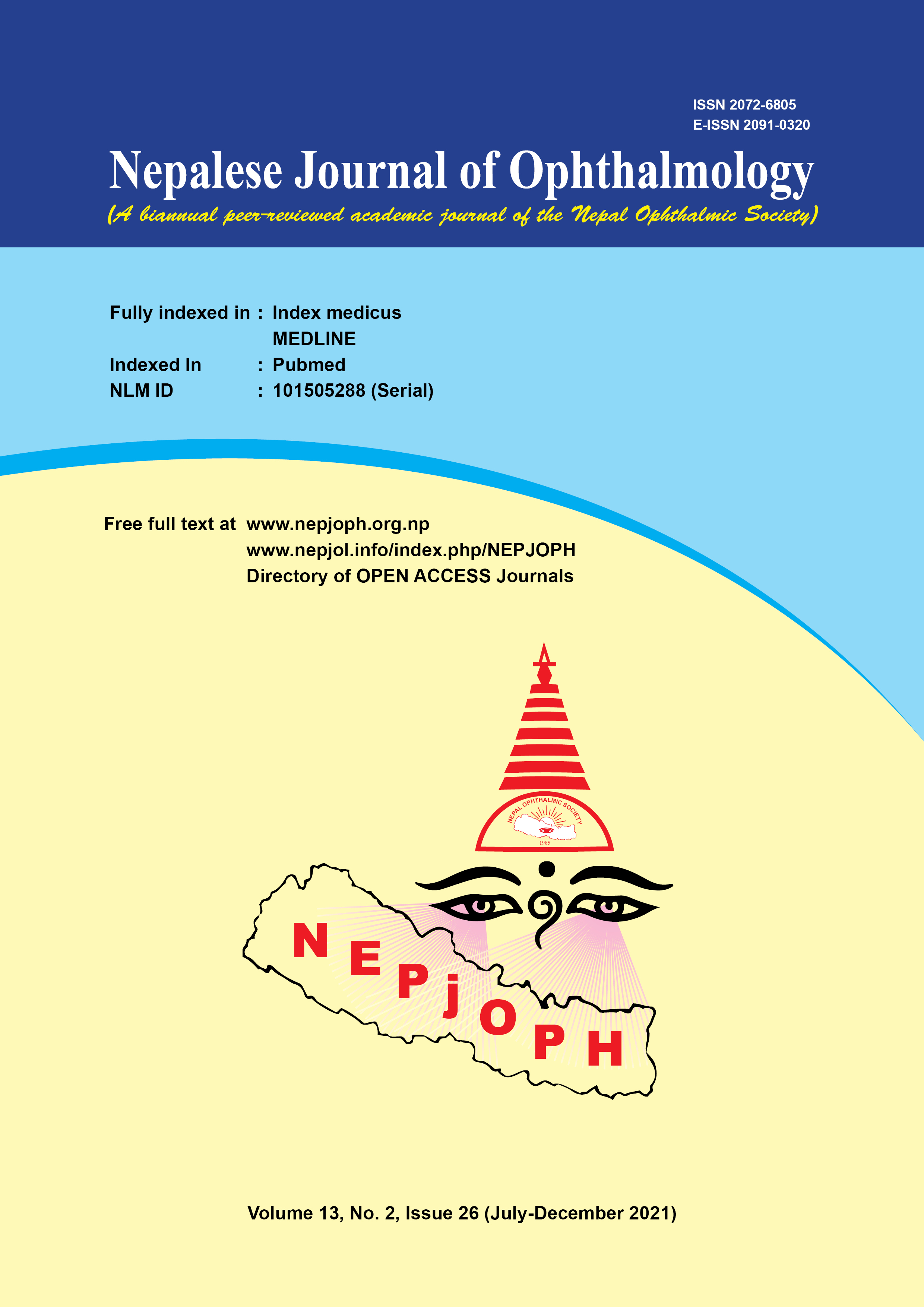Efficacy of Pneumatic Retinopexy in Treating Rhegmatogenous Retinal Detachment at King Abdullah Medical City in Makkah, Saudi Arabia – A retrospective cohort study
DOI:
https://doi.org/10.3126/nepjoph.v13i2.30707Keywords:
Pneumatic retinopexy, Gas tamponade, Retinal breaks, Retinal detachmentAbstract
Introduction: The aim of this study was to present the clinical presentation and short-term outcomes of uncomplicated rhegmatogenous retinal detachment managed by pneumatic retinopexy at a tertiary eye hospital in western Saudi Arabia.
Materials and methods: This one-armed retrospective cohort study evaluated selected cases of rhegmatogenous retinal detachment managed by pneumatic retinopexy between 2017 and 2018. Data were collected on patient demographics, preoperative ophthalmic assessment, surgical details, follow up at six months postoperatively, complications and the need for additional surgery. Anatomic success was defined as retinal attachment at 6 months and functional success was defined as vision >20/200 at six months postoperatively. The association of lens status and concomitant laser treatment to anatomical success rates were evaluated.
Results: The study sample consisted of 15 eyes with rhegmatogenous retinal detachment in the upper quadrant. In 14 cases, C3F8 gas was used. Anatomic and functional success was noted in 73.3% [95% confidence interval (CI) 51.0: 95.7] and 86.7% (95% CI 69.2; 100) of eyes, respectively. The association between anatomical success and lens status was not significant [RR = 4.5 (95% CI 0.6 ; 37.5), P=0.1]. There was no significant association between anatomical success and concomitant laser treatment. [RR = RR = 1.7 (95% CI 0.7 ; 4.0), P=0.2]. A 2nd retinal surgery was not required in 33.3% of eyes (95% CI 9.5 ; 57.2).
Conclusion: If stringent selection criteria are used for managing rhegmatogenous retinal detachment with pneumatic retinopexy, anatomical and functional success by six months postoperatively is achieved in the majority of cases. Additional surgeries could further improve outcomes.
Downloads
Downloads
Published
How to Cite
Issue
Section
License
Copyright (c) 2021 Nepalese Journal of Ophthalmology

This work is licensed under a Creative Commons Attribution-NonCommercial-NoDerivatives 4.0 International License.
This license enables reusers to copy and distribute the material in any medium or format in unadapted form only, for noncommercial purposes only, and only so long as attribution is given to the creator.




